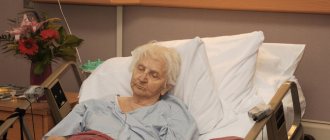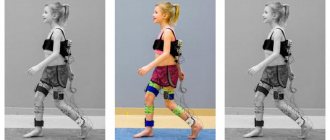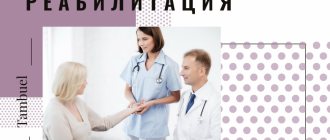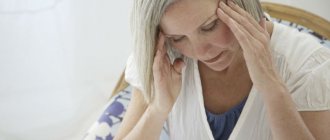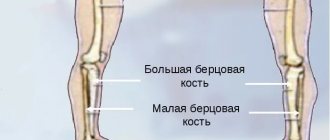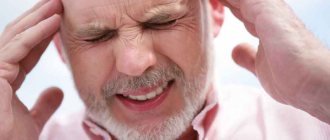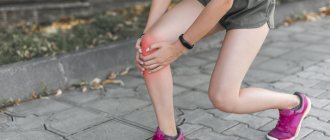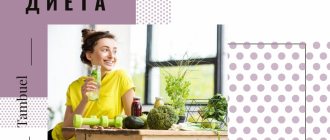Stroke is considered to be a disease of old people, but often the disease manifests itself in working age. From the age of 30, the likelihood of developing the disease increases. But advanced age is the most significant risk factor; 95% of strokes occur in people over 45 years of age, 2/3 of which occur after 65 years of age.
Rehabilitation after a stroke has its own characteristics. If you neglect the quality of treatment, the likelihood of recurrence increases. Brain damage is fraught with loss of performance, inability to return to a normal lifestyle, depression, and bedridden conditions.
It is possible to fully recover after a stroke. The most active restoration of the body occurs in the first six months after the start, and it can take up to 2-3 years to return the necessary functions.
What medical methods exist
An integrated approach is important in the treatment of patients after a stroke. Modern medicine has developed several rehabilitation methods.
- Drug therapy. It is required to expand the lumen in blood vessels and improve blood circulation. Treatment can be prescribed in courses or on an ongoing basis.
- Therapeutic exercise is the main assistant in restoring motor activity and the ability to return to a full life. A physical therapy specialist conducts individual sessions, during which the duration of the program is determined. In this way, you can speed up the rehabilitation process as a whole, but the exercises should also be performed at home.
- Massage. They try to administer it as early as possible, as far as the patient’s health allows. The duration of the massage is increased gradually, the program includes at least 20-30 sessions performed daily or every other day. After which you need a break of 1.5-2 months, and then the resumption of massage procedures.
- Physical therapy is one of the main medical practices in rehabilitation after stroke. In the absence of contraindications, treatment begins within 2-3 weeks. The number of procedures and their frequency can be determined by a specialist, based on individual indications. This often includes magnetic and manual therapy, SMT, therapy with paraffin, sand, steam, therapeutic mud, and electrophoresis.
A competent approach to treatment procedures leads to a greater likelihood of the patient returning to normal life in the end.
Why is memory impaired after a stroke?
The moment when a vessel in the brain becomes clogged or ruptures, a person may not notice, because... there may be no consequences of circulatory disorders. However, in situations where the circulatory system is significantly damaged and the blood does not deliver oxygen to one or another part of the brain, its cells stop functioning with proper efficiency and gradually die.
Cell necrosis is the main reason why various complications occur after a stroke: paralysis, speech dysfunction, memory loss.
Timely medical care and intensive rehabilitation sessions provide a chance to eliminate the negative consequences. Cells in a healthy area can take over the functions of those affected.
Scientists, based on cutting-edge brain research, view human memory in the light of three integral components that are involved in its formation and functioning:
- Short-term. The ability to store material in a short time period and small volume - about 20 seconds and several elements.
- Long-term. Unlimited in time and volume. Provides long-term storage of information.
- Operational. The ability to hold any amount of information and perform various operations with it in a short period of time.
Recording, storing and reproducing information is one of the main functions that makes a person capable and ensures his normal functioning. Each new source contributes to the formation of new neural connections. In a situation where a person needs to use the knowledge he has ever acquired, the neural connection is activated.
However, after a cerebrovascular accident, countless neurons die, and the connections that were formed between them are destroyed. This is how the process of memory loss occurs. Together with the killed neurons, a lot of material that a person has managed to accumulate during his life goes away.
The nature of the disorders depends on which area was destroyed and in which hemisphere of the brain critical changes occurred. The hemispheres work together, exchanging millions of impulses with each other every second. Their normal operation is impossible without the use of memory mechanisms. Therefore, it is very difficult to specify and accurately state what changes will be entailed by the death of one or another part of memory, and how this will affect a person.
In any situation, a patient with a stroke requires immediate medical attention and a long recovery process.
How to make your loved one feel better
If your relative or loved one is recovering from a stroke, you should think about how to help him even before discharge. As practice shows, with a positive atmosphere and support from the family, it is much easier for the patient to recover, so one should not be negative or worsen the microclimate.
It is also necessary to equip a bed for the ward in a convenient place so that all his needs are taken into account, and stock up on medications. If you have suffered a major stroke, due to which the person has become inactive, it is advisable to purchase an anti-bedsore system. So that those caring for the patient can avoid harming him and themselves, employees of rehabilitation centers teach them the rules of care and moving techniques.
In everyday life, it will be necessary to arrange the patient’s independent life so that he adapts to his usual conditions.
A set of active movements for the hands
You can make independent movements with your hands up to 20 times in one approach:
- clench and unclench your fingers into a fist;
- circles in both directions in the wrist joint (it is recommended to keep your fist clenched);
- flexion and extension at the elbows;
- from a position along the body, slowly rise and fall, while loading the shoulder joints;
- swing to the sides.
Exercises with dumbbells use flexor muscles and hold by clenching the hand into a fist.
How to help yourself
It is impossible to engage in rehabilitation on your own, even if this is not the most difficult case. At first, you will definitely need the help of others. In a hospital setting, this is done by doctors and nurses, and after discharge - by relatives and friends.
At this time, a person is advised to protect himself as much as possible from negative thoughts and concentrate on rehabilitation, since the desire to correct the situation brings him closer to this. Also, do not forget about regularly taking medications prescribed by your doctor.
How to do breathing exercises?
While lying down, the patient simply needs to take a few deep breaths, repeat throughout the day as often as possible. When the doctor allows you to sit, it is important not to bend your back, but to keep it straight so that the air can straighten your lungs as much as possible.
Breathing exercises involve taking a slow, deep breath, holding your breath for a few seconds, and then gradually exhaling. After each such breath, the patient needs rest. You need to make sure that dizziness does not increase, and do not strain while holding your breath.
There are options for controlling long exhalation:
- inflating a rubber ball;
- using a cocktail straw dipped into a cup of water.
The patient feels the result of his work by the volume of the ball and the gurgling of the liquid. In the future, you can begin to master a course of exercises using Strelnikova’s method.
Recovery checklist
- for the first time, it is advisable to place the patient in a rehabilitation center;
- giving up bad habits will help prevent another stroke;
- a responsible approach to treatment methods involves attending massage, exercise therapy, physiotherapy and taking medications without skipping;
- working with a psychologist will help you get out of prolonged depression;
- recovery cannot be postponed until later, you should start from the first days;
- help from relatives and friends, including psychological help, is a prerequisite for a successful result.
Today, anyone can experience a stroke, regardless of age. If this has already happened, it is important not to despair, because modern specialized clinics are designed to simplify the recovery process. Relatives are required to show sensitivity, attention and patience towards the patient.
Advantages of rehabilitation in a sanatorium and in a specialized center:
Daily activities
It's no secret that training at home is carried out less frequently than necessary.
Psychological support
The specialist will be able to find an approach to each patient, he will take into account the characteristics of his personality and the specific course of the disease;
Professional help
A specialist will select a set of exercises, and he will personally monitor the correctness of their implementation and evaluate the body’s reaction.
Special simulators and devices
Thanks to special stands, training doors with locks and other items for teaching lost skills, the effectiveness of classes is significantly increased
Of course, no one will give a 100% guarantee of complete rehabilitation, but the chances of success increase significantly
A set of active exercises for legs
For the legs, exercises can also be started with a period of strict bed rest and continued while sitting. The number of repetitions should not tire the patient and increase gradually to 20.
- The toes actively perform flexion and extension.
- Pull your socks towards you, then move them to the opposite extreme position (it is recommended to mentally imagine the pressure on the pedals).
- Slow knee flexion, extension.
- Abduction to the side due to the work of the hip joint.
What other movements need to be developed?
Physical education after a stroke, in addition to the limbs, requires the development of facial muscles, especially the eyes. To prevent drooping of the eyelid, the following exercises are recommended 5-7 times:
- eye movements up and down and to the sides;
- describe a circle with your eyes in one direction, then in the other;
- blink and squeeze for a few seconds.
To strengthen your neck muscles you need to:
- make slow turns of the head to the sides;
- rest your head on the pillow, then relax.
After a stroke, a person loses the ability to make small movements with his fingers. And this is very necessary in restoring self-service. To develop hand motor skills it is recommended:
- Place small items (nuts, buttons, spools of thread, pencils) in a large bowl;
- the patient should transfer them with the affected hand from one bowl to another.
In sanatoriums, games of mosaic, lotto, and collecting pyramids are used.
The influence of exercise therapy on the patient’s nervous system
Therapeutic exercise is the performance of certain physical exercises, which begin with the simplest movements of the patient after he regains consciousness, then the physical activity gradually increases, the exercises become more complex. Exercise therapy helps improve blood circulation in organs and tissues, accelerates the process of restoration of various body functions, and improves metabolism. Physical therapy exercises for each patient are selected individually depending on the severity of the patient’s condition and concomitant diseases. An individual physical therapy program at the Yusupov Hospital is drawn up by a rehabilitation doctor.
Make an appointment
For the shoulder joint
Restoration of the forearm and shoulder joint takes place with the help of flexion and extension exercises, rotation, push-ups, muscle tension and relaxation, clapping, and massage. To do this, use exercise machines, dumbbells, and various devices. First, the arm is kneaded, then a set of exercises is performed; therapeutic exercises are always combined with a massage of the limbs. A set of exercises for the shoulder joint:
- The patient lies on his back, arms extended along the body. The instructor holds his hand at the elbow to avoid bending, takes the patient's palm with his other hand and moves the patient's arm up and down.
- The instructor performs circular movements with the patient's arm fixed in a straightened state.
- The patient lies on his back, with his arm slightly to the side. The instructor turns the straightened arm over, palm down, then up.
Exercises while standing
For a patient who is able to stand and move slowly, the number of exercises should be increased and varied. However, there is no need to rush. You need to start with a simple complex, and then move on to a more complex one with increasing load.
The following exercises are considered simple:
- stretching with a description of circular movements with the hands and mandatory control of breathing (when moving up, take a deep breath, down, exhale completely);
- alternately rolling from toes to heels with tension in the calf muscles;
- turns to the sides (5-6 times each);
- squats without lifting your heels off the floor 4–5 times;
- bending to the sides while raising the opposite arm above your head 4 times;
- swing your legs forward and to the sides, 4 each;
- alternate lunges forward with a slight shift of weight to the front leg.
Half-lunge with clasped hands is used to increase the load
Added to the complex with increased load:
- stretching with hands clasped in a “lock”;
- swinging your legs while holding your hand on a stationary headboard of a bed or chair;
- bend forward and to the sides 10 times, standing on tense legs in a position slightly wider than shoulder width;
- “boxing” with your hands while turning your body;
- circular rotations in the shoulder joints forward and backward;
- arbitrary jumps.
The exercises should be completed by walking in place and deep breathing movements for 5 minutes.
Contraindications
Limitations in rehabilitation depend on the patient's condition. Physical activity is not indicated in the following cases:
- the patient did not recover from the coma;
- mental changes in behavior and aggressiveness are observed;
- repeated stroke in an elderly person;
- there are symptoms of epileptiform seizures, cramps in the limbs;
- Stroke is accompanied by severe diabetes mellitus, tuberculosis, and cancer.
An important point in physical therapy is the patient’s comfortable state of health. The appearance of headaches and weakness requires control of blood pressure, rest, and a slower rate of increase in load.
After gaining the opportunity to walk, it is necessary to use walks in the air with a gradual lengthening of the route. Confidence in one’s abilities and the support of loved ones allows the patient to take stroke therapy as beneficially as possible and strive for a full recovery.
Recommendations from physiotherapists
After a stroke, life changes not only for the victim, but also for those close to him. You need to understand that there is a long rehabilitation ahead, which can last for several years. This is why rehabilitation exercises after a stroke are so important. Many people use methods recommended by their doctor. Recommendations from specialists in this direction will not hurt, among whom Bubnovsky’s technique receives special attention.
The main direction of rehabilitation therapy of this doctor is kinesitherapy - restoration through movement. He, like other doctors, argues that it is important to begin the method he developed immediately after severe symptoms have been relieved. Initially, this is passive therapy with the help of assistants. Later, patients begin to perform exercises themselves using exercise machines.
